Portfolio Management
This section will explain how the user could leverage NFTGo to keep track of their own NFT portfolio and look into the particular wallet they are interested in.
Wallet Tracking
NFTs
All of the NFT collections that the wallet holds can be seen. The collections are shown on the left, and users can perform a search efficiently through the search function. Filters have also been integrated into this feature to allow users to find better the particular collection or category they might be interested in.
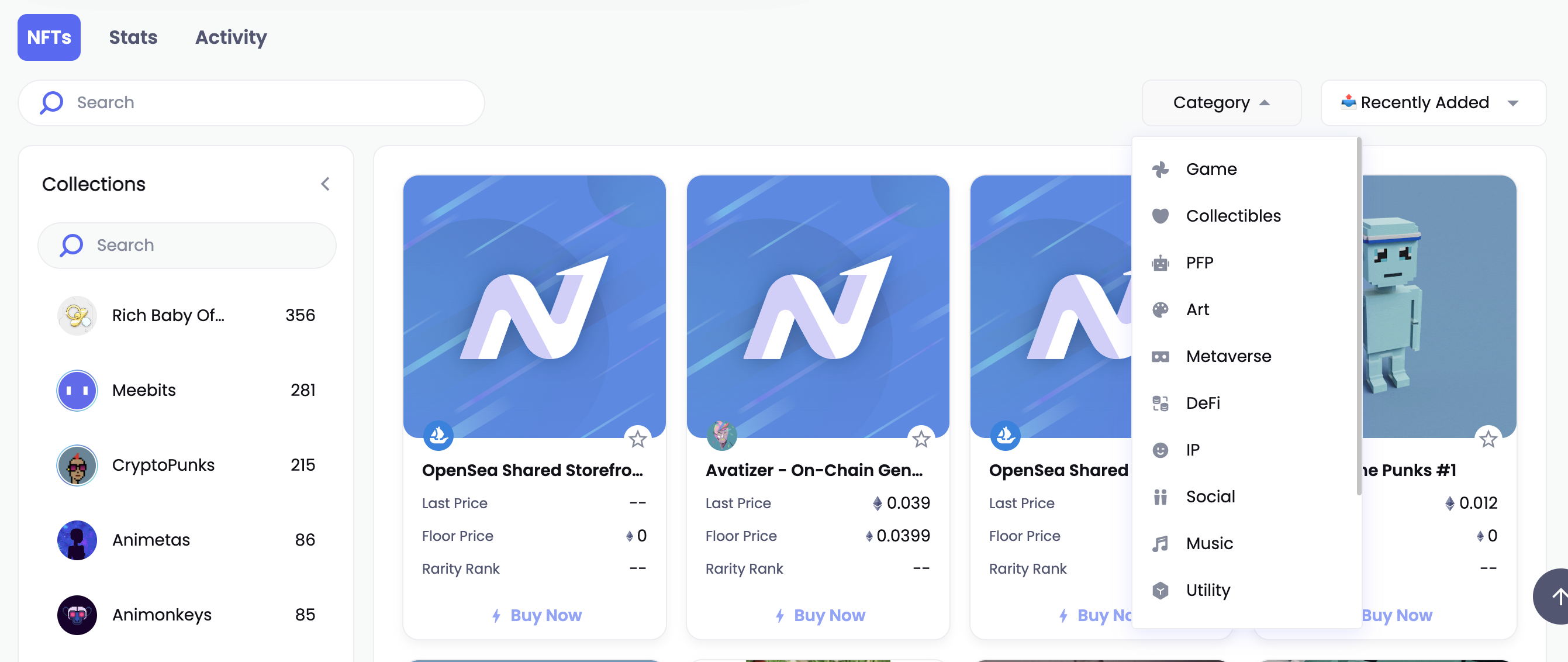
Stats
Dashboard
A dashboard that gives users a relatively detailed overview of the wallet, with the following details:
- Profit & Loss
- Unrealized Profit
- Realized Profit
- Total Revenue
- Total Spent
- Total Gas
- Related Addresses

Portfolio
After a brief gauge of the wallet's performance, users can look deeper into the collections the wallet has invested in. The estimated value of such collections within the wallet is assessed, and the number of NFTs held for each collection is displayed. Hence, if users notice that the wallet has a vast number of NFTs within one collection and has a corresponding high estimated value, they can look more into it.
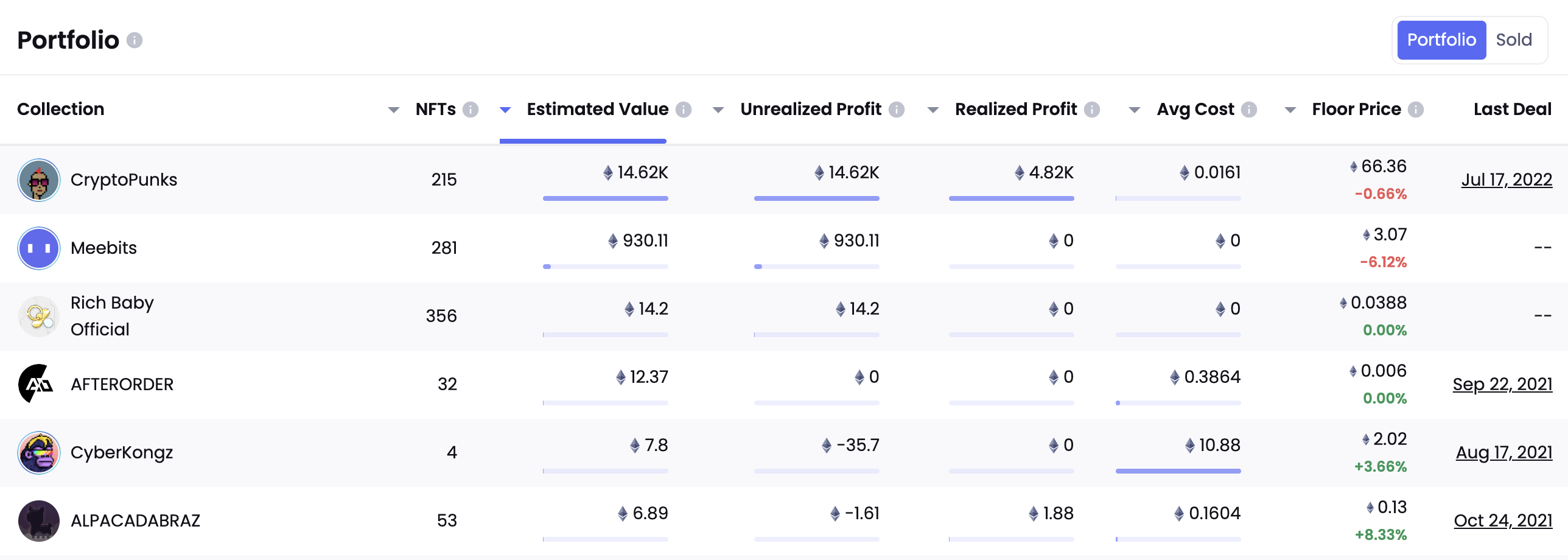
Holding Distribution
Holding Distribution is the distribution of the different collections within the portfolio. If a user notices an abnormally large percentage of the portfolio is concentrated towards a single collection, it may speak volume of the confidence that the wallet has in that collection.
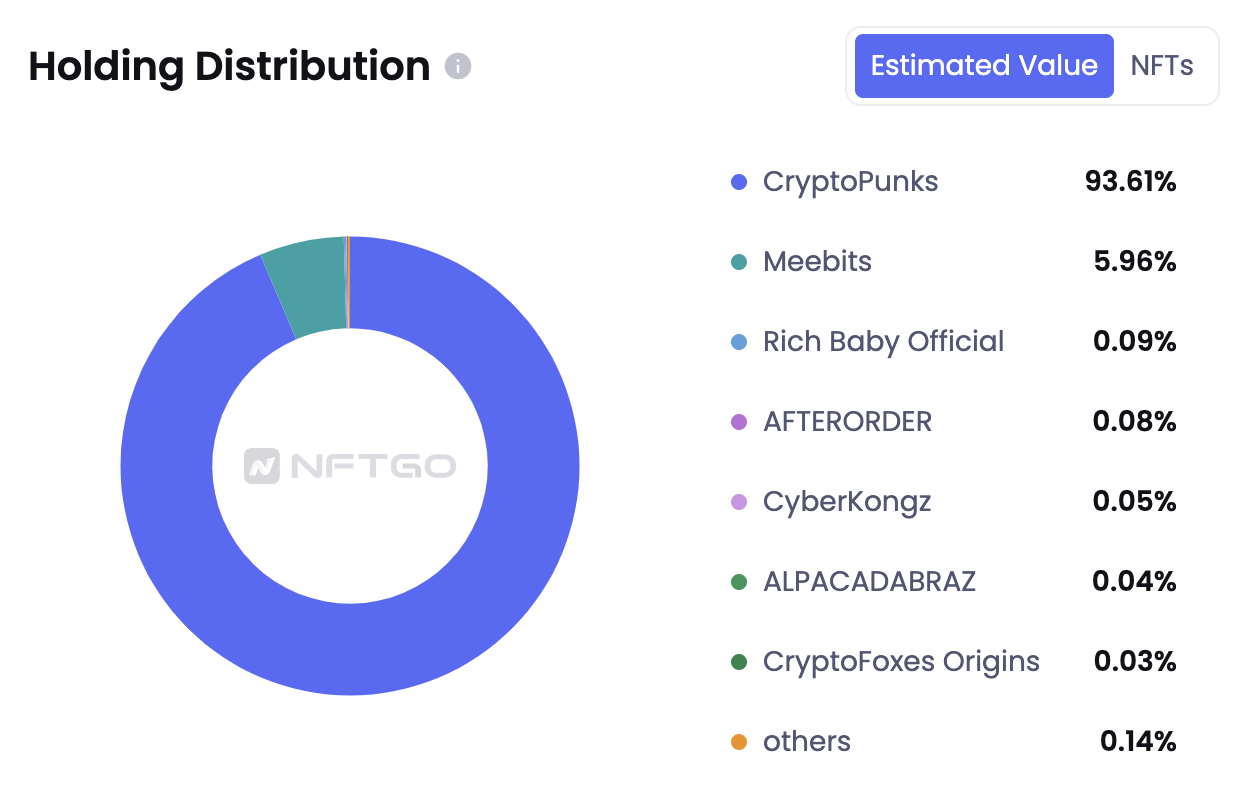
Related Addresses
Users can also look into related addresses, which are addresses that the particular wallet sends or receives NFTs. For example, suppose users notice that the wallet has received many NFTs from another wallet. In that case, the user can look more into the other wallet, for it could be another person's address or a contract address.
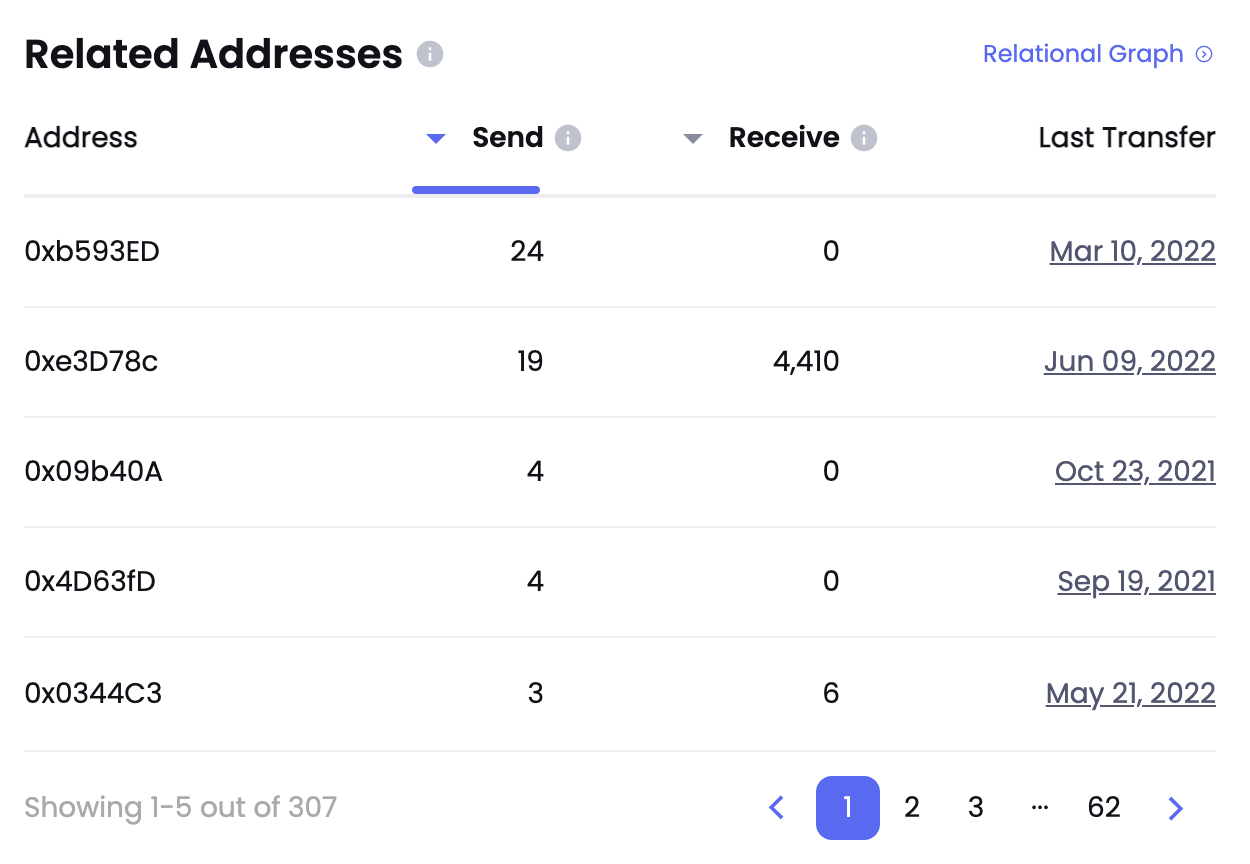
Activity
Observe the overall trend in the wallet's activity. It tracks the following:
- Mint
- Bought
- Sell
- Burn
- Send
- Receive
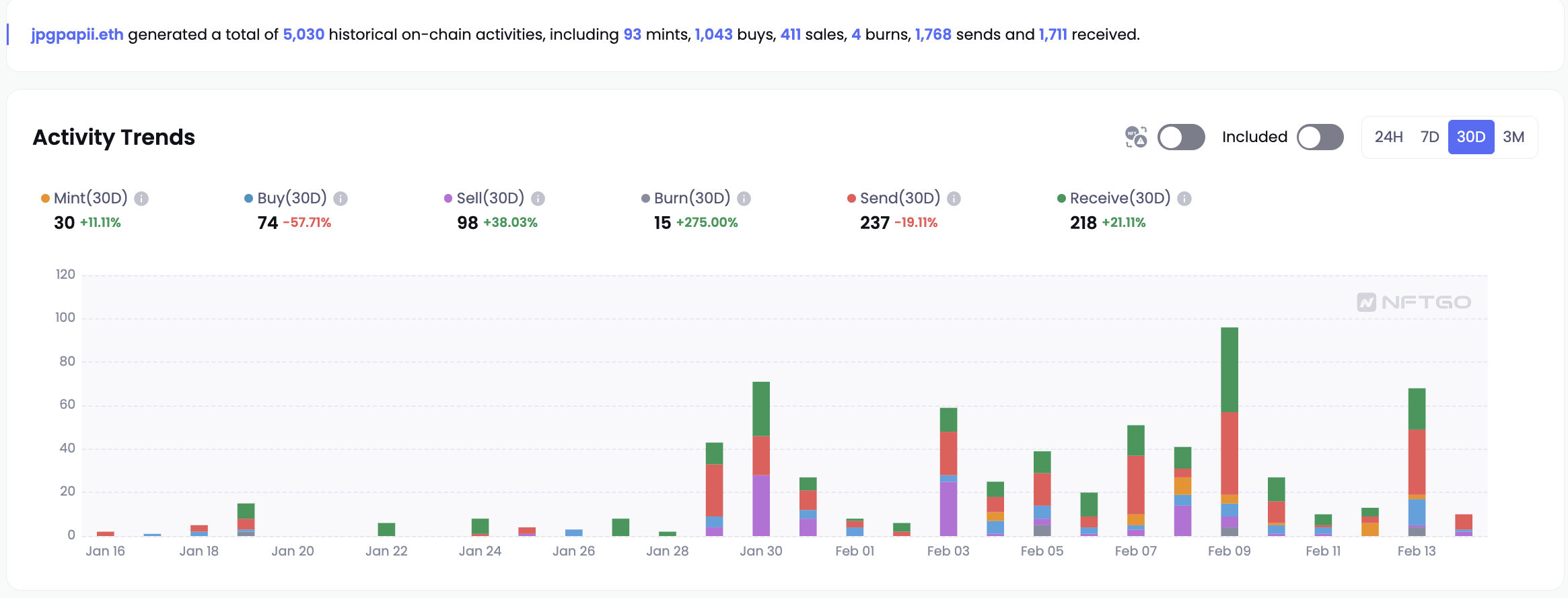
Should users notice a surge in buying or minting activity, users can scroll down to look at the ongoing transactions. This will allow them to identify which particular collection they can research more. 'Activities' feed also supports an advanced activity filter, similar to collection activity feed, which includes:
- filter to show activities during a specific time frame
- filter to show activities that happened in specific marketplaces
- filter to show activities related to specific collections
- filter to show certain types of activities including sale, deal, list, offer, collection offer, transfer, mint, burn
- filter out all wash-trading activities
- filter only to show activities related to the collections included in NFTGo
- For 'Mint' Activities, some collection creators may mint NFTs to influencers' addresses to take advantage of their impact, which could mislead users. NFTGo provides an 'Only mints by Owners' filter to enable users to filter out those 'Mint' activities that are minted to another wallet address.
- Only show NFTFi Activities
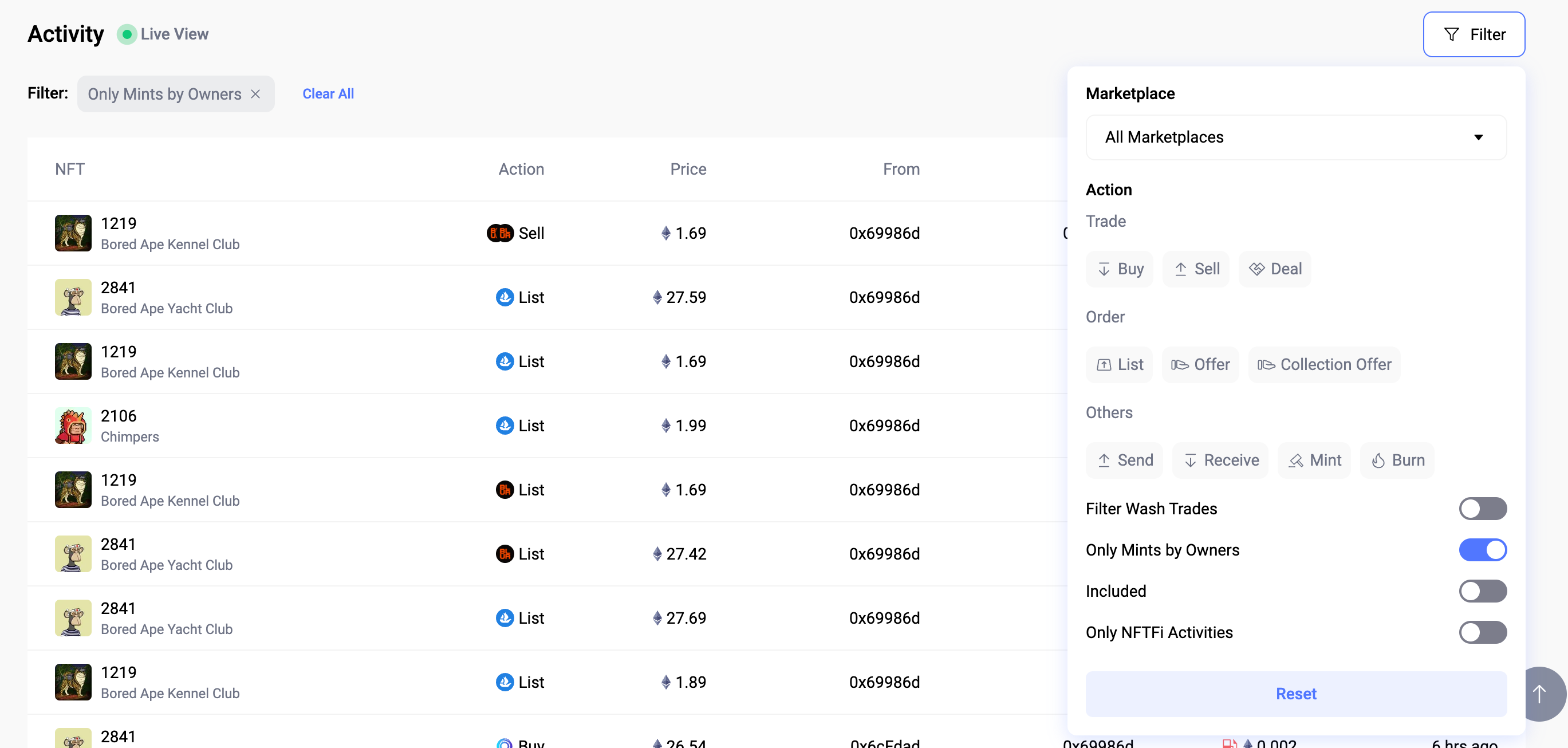
Portfolio Dashboard
For every NFT investor/trader, it is important for one to be able to keep track of their NFT portfolio. NFTGo looks towards making this as convenient as possible for users, aggregating all information pertaining to users' portfolio. This allows users to have an overview of how their own portfolio has been performing, on top of just knowing which NFTs they are holding onto.

Portfolio Value
This refers to the estimated value of a user's portfolio and is derived with 2 steps.
Firstly, the estimated value of each collection that the user holds onto is calculated as follow:
Secondly, the portfolio value is obtained as follow:
Note: Suspected wash trades have been filtered.
The dashboard also highlights the changes in the portfolio value over 7 days and 30 days. This will allow users to track the fluctuation in their portfolio value over time, giving them a good overview of the market performance. For example, if users notice that their estimated portfolio value has increased significantly, they can look into their NFTs to determine if they would like to profit. Vice versa, should the estimated portfolio value have decreased, users will have to consider whether they would like to cut loss on the NFT or are confident that the collection will increase its worth in the future.

PnL
One of the most critical metrics that users look out for is the profit and loss made. Before any analytics platform, users must calculate their profit manually should they sell certain NFTs. This is a highly tedious process and often inaccurate, given that the floor price changes rapidly. With NFTGo, the profit and loss of a user's portfolio are automatically calculated. This is a dynamic number that comprises both realized and unrealized profits.
Similarly, this feature highlights the changes in profit and loss of the portfolio over 7 days and 30 days. Should users recognize that this number has been increasing despite not having made any sales, it indicates that some of the NFTs within the portfolio is becoming increasingly profitable. Users can choose whether to sell these NFTs to realize the profits.
Cost & Revenue Segmentation
The Cost & Revenue Segmentation chart is a lot more detailed and breaks down the PnL, covering the following:
- Total Revenue
- Total Spent
- Total Gas
- Avg Cost
- Avg Sell Price
This allows users to understand better how their profit and losses were derived. In addition, should users notice that they have been paying a lot for gas, they should consider using aggregators that could help them get optimized gas fees.
Holding Distribution
Same as the holding distribution section in wallet tracking, with a few different metrics
- Estimated Value
- Value
- NFTs
Disclaimer
The above does not constitute financial advice. It should also be noted that whales are in a position where they can afford losses and thus ape into collections more often. Do perform your own due diligence before buying into a particular collection.
Updated 6 months ago
